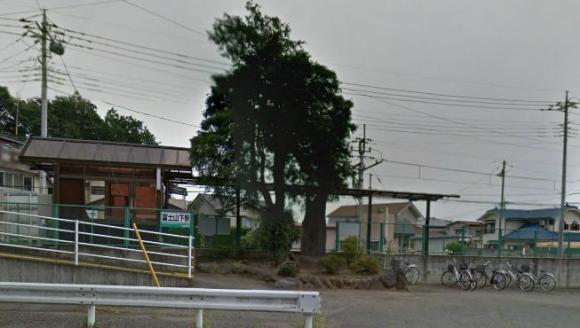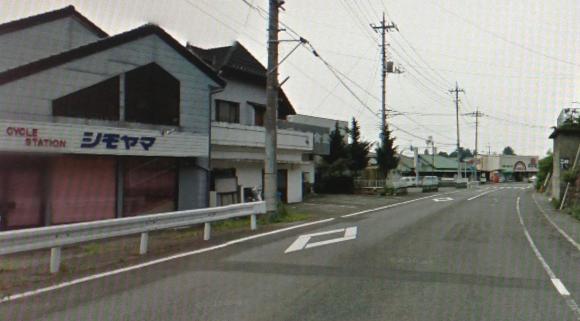 It looks like Mt. Fuji is well on it’s way to becoming an official piece of World Heritage, which means the area can expect an upswing in tourism. Around 200 km away in Gunma Prefecture, workers at Fujiyamashita Station are also bracing for an increase in foreigners mistaking the tiny station for the closest stop to the majestic mountain.
It looks like Mt. Fuji is well on it’s way to becoming an official piece of World Heritage, which means the area can expect an upswing in tourism. Around 200 km away in Gunma Prefecture, workers at Fujiyamashita Station are also bracing for an increase in foreigners mistaking the tiny station for the closest stop to the majestic mountain.
For Hirokazu Nagumo, the operator of a single car train for Jomo Rail, this is bad news. The disappointed faces of heartbroken visitors over his 18 year career is an image he has trouble shaking from his memory.
In an interview with Tokyo Shinbun, the 38 year-old train operator recalls an incident in which he transported a young Chinese couple from Akagi Station which connects to the Tobu railway from the Tokyo area. He remembered that when they arrived at Fujiyamashita Station, the couple asked where Mt. Fuji was in charmingly broken Japanese. He also remembers how devastated they looked when he told them it was 200 km and two prefectures away. The tourists promptly turned around and got on the next train back to Tokyo.
According to reports from workers, Jomo Rail estimates that tourists from Europe, America, and Asia mistake Fujiyamashita Station as the destination to see Mt. Fuji on a yearly basis. However, when they arrive, instead of the elegant symmetry of the World Heritage Site contender, they are presented with a somewhat less awe-inspiring vista including the Echigoya Liquor & Food of Kiryu City, Gunma Prefecture.
These wayward sightseers were probably mislead by the name Fujiyamashita (lit. beneath Fuji Mountain) into thinking it was near the foot of Japan’s most famous mountain. Anyone planning to visit Fuji from Tokyo would have more luck by heading the opposite direction to Fujisan Station in Fujiyoshida City, Yamanashi Prefecture. Further complicating things, when written in kanji characters “fujiyama” (Fuji Mountain) and “fujisan” (Mt. Fuji) look identical.
This begs the question why a station nowhere near Fuji would have a name synonymous with “beneath Fuji.”
Just north of the station lies a 40 m tall mountain covered in dense vegetation called Fujiyama, which holds an Asama shrine once frequented by worshipers of volcanoes, in particular Mt. Fuji. During the Edo period residents would climb it as if it were Mt. Fuji as a part of the religious practices. Although volcano worship has plummeted considerably since then, the locals still regard the shrine and mountain as an important part of their culture and history.
As such it’s not likely they will change the name any time soon. In fact, word has it they’re considering applying for World Heritage status themselves. As for confused sightseers, Jomo Rail said they are looking into ways to prevent future foreigners from landing on the platform of poor, misunderstood Fujiyamashita Station.
Source: Tokyo Web (Japanese)
Images: Google Maps
How to get to Fujisan Station from Fujiyama Station in case anyone gets confused.


 Mount Fuji plans to start charging compulsory fee to climbers
Mount Fuji plans to start charging compulsory fee to climbers Barricades placed on Mt. Fuji as mountain officially closes because of coronavirus【Video】
Barricades placed on Mt. Fuji as mountain officially closes because of coronavirus【Video】 Space World Station becomes the most misleading station name in Japan
Space World Station becomes the most misleading station name in Japan Gunma Prefecture’s adorable mascot dances into our hearts and travel plans 【Video】
Gunma Prefecture’s adorable mascot dances into our hearts and travel plans 【Video】 Nude photos of Mt. Fuji circulate online as powerful typhoon removes snow from the peak【Photos】
Nude photos of Mt. Fuji circulate online as powerful typhoon removes snow from the peak【Photos】 McDonald’s new Happy Meals offer up cute and practical Sanrio lifestyle goods
McDonald’s new Happy Meals offer up cute and practical Sanrio lifestyle goods More foreign tourists than ever before in history visited Japan last month
More foreign tourists than ever before in history visited Japan last month Starbucks reopens at Shibuya Scramble Crossing with new look and design concept
Starbucks reopens at Shibuya Scramble Crossing with new look and design concept The oldest tunnel in Japan is believed to be haunted, and strange things happen when we go there
The oldest tunnel in Japan is believed to be haunted, and strange things happen when we go there Is the new Shinkansen Train Desk ticket worth it?
Is the new Shinkansen Train Desk ticket worth it? What happens to Cup Noodle Mystery Meat when you cook it in a rice cooker?
What happens to Cup Noodle Mystery Meat when you cook it in a rice cooker? Disney princesses get official manga makeovers for Manga Princess Cafe opening in Tokyo
Disney princesses get official manga makeovers for Manga Princess Cafe opening in Tokyo Beautiful new Final Fantasy T-shirt collection on the way from Uniqlo【Photos】
Beautiful new Final Fantasy T-shirt collection on the way from Uniqlo【Photos】 Dogs now allowed on Catbus! Ghibli Park vehicles revise service animal policy
Dogs now allowed on Catbus! Ghibli Park vehicles revise service animal policy Our reporter takes her 71-year-old mother to a visual kei concert for the first time
Our reporter takes her 71-year-old mother to a visual kei concert for the first time We try out “Chan Ramen”, an underground type of ramen popular in the ramen community
We try out “Chan Ramen”, an underground type of ramen popular in the ramen community Foreign English teachers in Japan pick their favorite Japanese-language phrases【Survey】
Foreign English teachers in Japan pick their favorite Japanese-language phrases【Survey】 There’s a park inside Japan where you can also see Japan inside the park
There’s a park inside Japan where you can also see Japan inside the park New Studio Ghibli bedding sets are cool in all senses of the word
New Studio Ghibli bedding sets are cool in all senses of the word Japanese convenience store packs a whole bento into an onigiri rice ball
Japanese convenience store packs a whole bento into an onigiri rice ball Hanton rice — a delicious regional food even most Japanese people don’t know about, but more should
Hanton rice — a delicious regional food even most Japanese people don’t know about, but more should New Pokémon cakes let you eat your way through Pikachu and all the Eevee evolutions
New Pokémon cakes let you eat your way through Pikachu and all the Eevee evolutions Hamburg and Hamburg Shibuya: A Japanese restaurant you need to put on your Tokyo itinerary
Hamburg and Hamburg Shibuya: A Japanese restaurant you need to put on your Tokyo itinerary Studio Ghibli releases Kiki’s Delivery Service chocolate cake pouches in Japan
Studio Ghibli releases Kiki’s Delivery Service chocolate cake pouches in Japan Japan’s bone-breaking and record-breaking roller coaster is permanently shutting down
Japan’s bone-breaking and record-breaking roller coaster is permanently shutting down New definition of “Japanese whiskey” goes into effect to prevent fakes from fooling overseas buyers
New definition of “Japanese whiskey” goes into effect to prevent fakes from fooling overseas buyers Foreign passenger shoves conductor on one of the last full runs for Japan’s Thunderbird train
Foreign passenger shoves conductor on one of the last full runs for Japan’s Thunderbird train Our Japanese reporter visits Costco in the U.S., finds super American and very Japanese things
Our Japanese reporter visits Costco in the U.S., finds super American and very Japanese things Kyoto bans tourists from geisha alleys in Gion, with fines for those who don’t follow rules
Kyoto bans tourists from geisha alleys in Gion, with fines for those who don’t follow rules Studio Ghibli unveils Mother’s Day gift set that captures the love in My Neighbour Totoro
Studio Ghibli unveils Mother’s Day gift set that captures the love in My Neighbour Totoro Domino’s Japan now sells…pizza ears?
Domino’s Japan now sells…pizza ears? New Japanese KitKat flavour stars Sanrio characters, including Hello Kitty
New Japanese KitKat flavour stars Sanrio characters, including Hello Kitty Kyoto creates new for-tourist buses to address overtourism with higher prices, faster rides
Kyoto creates new for-tourist buses to address overtourism with higher prices, faster rides Sales of Japan’s most convenient train ticket/shopping payment cards suspended indefinitely
Sales of Japan’s most convenient train ticket/shopping payment cards suspended indefinitely Sold-out Studio Ghibli desktop humidifiers are back so Totoro can help you through the dry season
Sold-out Studio Ghibli desktop humidifiers are back so Totoro can help you through the dry season Japanese government to make first change to romanization spelling rules since the 1950s
Japanese government to make first change to romanization spelling rules since the 1950s Ghibli founders Toshio Suzuki and Hayao Miyazaki contribute to Japanese whisky Totoro label design
Ghibli founders Toshio Suzuki and Hayao Miyazaki contribute to Japanese whisky Totoro label design Doraemon found buried at sea as scene from 1993 anime becomes real life【Photos】
Doraemon found buried at sea as scene from 1993 anime becomes real life【Photos】 Tokyo’s most famous Starbucks is closed
Tokyo’s most famous Starbucks is closed One Piece characters’ nationalities revealed, but fans have mixed opinions
One Piece characters’ nationalities revealed, but fans have mixed opinions We asked a Uniqlo employee what four things we should buy and their suggestions didn’t disappoint
We asked a Uniqlo employee what four things we should buy and their suggestions didn’t disappoint Princesses, fruits, and blacksmiths: Study reveals the 30 most unusual family names in Japan
Princesses, fruits, and blacksmiths: Study reveals the 30 most unusual family names in Japan Studio Ghibli’s new desktop Howl’s Moving Castle will take your stationery on an adventure
Studio Ghibli’s new desktop Howl’s Moving Castle will take your stationery on an adventure New train recreates hotel atmosphere with wood interiors and views from the foot of Mount Fuji
New train recreates hotel atmosphere with wood interiors and views from the foot of Mount Fuji Photos of “everyday life” in the town next to Mt. Fuji look like a beautiful fantasy world
Photos of “everyday life” in the town next to Mt. Fuji look like a beautiful fantasy world Mt Fuji railway project receives approval from Yamanashi officials
Mt Fuji railway project receives approval from Yamanashi officials “Floating” Mt Fuji and shrine gates capture the hidden beauty of Japan【Photos】
“Floating” Mt Fuji and shrine gates capture the hidden beauty of Japan【Photos】 Free Wi-Fi is coming to Mt. Fuji this summer
Free Wi-Fi is coming to Mt. Fuji this summer Step into Spirited Away at Egawa: a site of beauty in Japan that tourists have yet to discover
Step into Spirited Away at Egawa: a site of beauty in Japan that tourists have yet to discover Japan now has Mt Fuji bread!
Japan now has Mt Fuji bread! 12 beautiful Japanese train stations by the sea
12 beautiful Japanese train stations by the sea Amazing time-lapse-style video shows 150-year history of the growth of train stations in Japan
Amazing time-lapse-style video shows 150-year history of the growth of train stations in Japan 14 tips for visiting the Mt Fuji Shibazakura Festival, where beautiful “lawn sakura” blossom
14 tips for visiting the Mt Fuji Shibazakura Festival, where beautiful “lawn sakura” blossom Hike from the sea to the peak of Mt. Fuji with new bilingual English/Japanese guide map series
Hike from the sea to the peak of Mt. Fuji with new bilingual English/Japanese guide map series Fuji Dream Airlines is offering limited Mt. Fuji sightseeing flights
Fuji Dream Airlines is offering limited Mt. Fuji sightseeing flights The top 5 places to see the sun set in Japan
The top 5 places to see the sun set in Japan What’s going on in this crazy beautiful picture of Mt. Fuji?
What’s going on in this crazy beautiful picture of Mt. Fuji? San’in, Japan is breathtakingly beautiful especially when captured with a 4K video camera【Video】
San’in, Japan is breathtakingly beautiful especially when captured with a 4K video camera【Video】
Leave a Reply